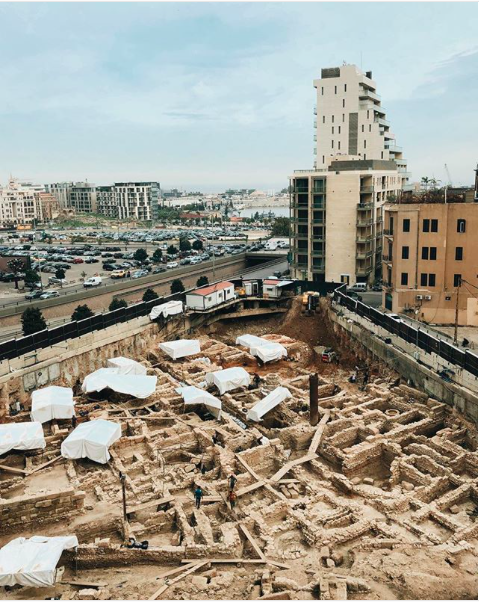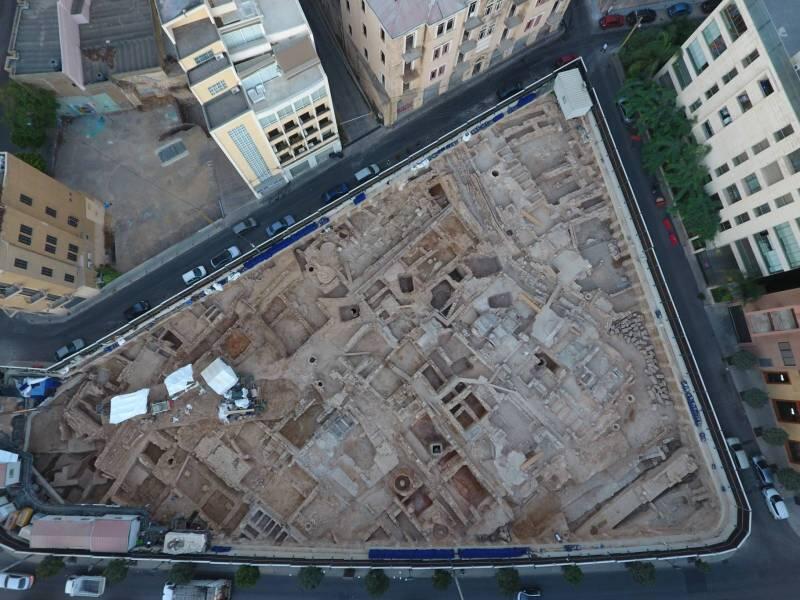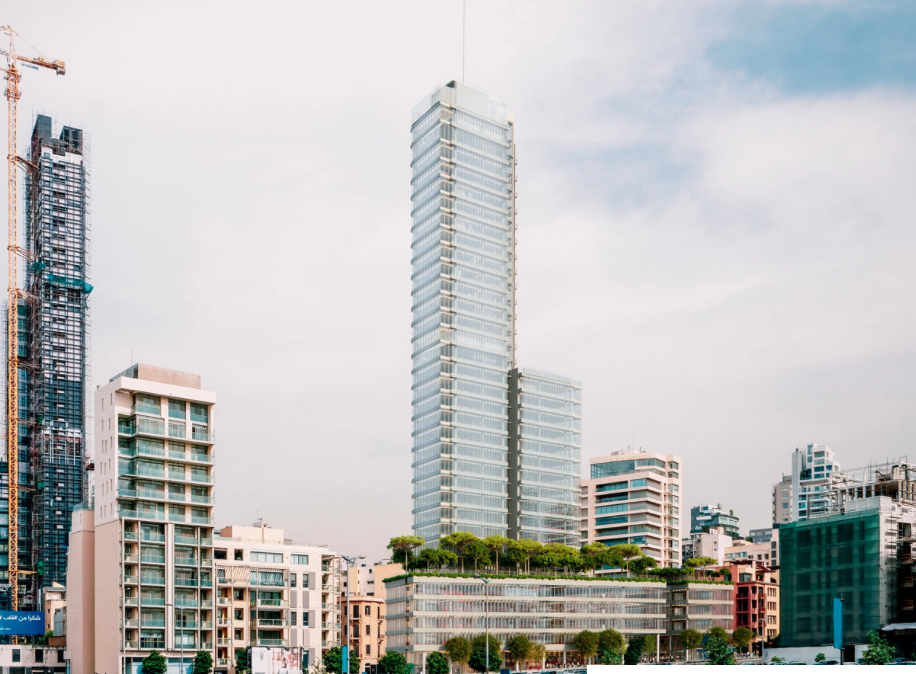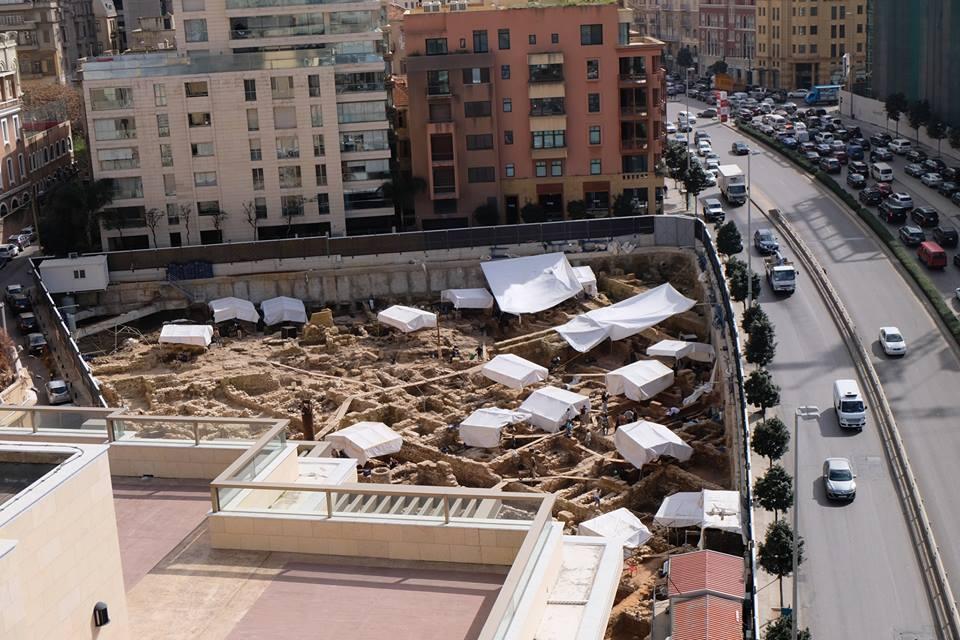
“We will find where you live,” a watchman yelled at me after taking a picture of ruins on his construction site. He had followed me across the street to issue the threat, claiming to have memorized the license plate number on my car. “Wait and see what they will do to you when they come to your house.”

This vast site, believed to be a 1st century artisan workshop (for at least part of its occupation), was uncovered late last year and could help tell the little-known story of Berytus, one of the most influential cities in the Roman empire.

Instead it is scheduled to become a glass skyscraper, serving as the headquarters of a private bank, SGBL (Société Générale de Banque au Liban).

The skyscraper is being designed by the famous Italian architect Renzo Piano, one of many celebrity architects transforming Beirut’s skyline with high end real estate towers worth billions of dollars and far out of reach of most Lebanese people. Piano is also designing the massive 160,000 square meter Pinwheel Project, which consists of a series of hotel and condo towers in the heart of downtown, as well as a city museum project, which is also to be built atop of a ruins discovery.

Sadly the type of violent threats and harassment I experienced is not unusual when attempting to document the wonders of the ancient world being unearthed for the first time in contemporary Beirut. One would assume that a 2,000 year old site is one the entire country should be able to see, to learn from, to explore, to be inspired by, to build a sense of place, pride in preservation or national belonging. But in Lebanon, history can be private property. Several journalists and activists have been threatened or physically attacked for documenting the impact of real estate projects across the country.
To appease critics, some investors have recently pledged to preserve very limited sections of ruins, displayed decoratively as part of their real estate projects or concealed in parking garages. Yet these are often placed out of context or difficult for visitors to access and comprehend. In the case of the Piano project, can the design of such a large building possibly preserve the vast vista of ruins beneath? Can the design be changed in any way meaningful enough to communicate its significance and that of ancient Berytus?
Upon closer view, we can see the interesting rock patterns in the walls. What do they tell us?
At the top corner of the site, the stones are entirely different, much larger and better carved, resembling grand Roman structures. Was there an important building near this site?

Most importantly, will the public ever get a chance to experience this piece of the puzzle of a city and great civilization we are just beginning to understand? With large walls surrounding the permiter, as seen in the photos above, passersby are not allowed even a glimpse of it. (Photos in the post were taken from other buildings or openings in the wall.)
At any rate, the site might not be around for much longer. Clearance may be closer than we think. In photos taken a few months ago, we can see nearly 20 tents set up in the dig:

But today there are only a few tents left, meaning the archeological teams may have largely packed up and left:

Is this why the developer is so aggressively keeping it off limits to the public? The site workers must have been threatened themselves if anyone is allowed to get a photo out.
It’s unclear if the diggers have already started to clear the area or penetrate to deeper levels as their position has changed since I first began documenting the site earlier this year.
Compare this image taken in January 2018:

To this photo taken from the same vantage point in recent days:

In addition to the removal of tents, we can also see the position of the two bulldozers is further into the site than they were early this year.
Here’s another shot from January 2018:

And the same vantage point today:

From a closer perspective, we can some of the amazing wall detail on the left section:

So what to make of the threats issued to me for taking these photos? They were taken from the public street, from the sidewalk, at a brief moment when the door to the site was open. There is no legal basis for banning photography in public space. There is no basis in banning the Lebanese public from seeing their own history. But who was the man who threatened me and why?
The owner of SGBL bank is known to surround himself with those capable of serious violence. His bodyguards have regularly engaged in alleged criminal acts, including armed assaults and even a shootout in nightclub, according to news reports. In 2015, a bodyguard formerly employed by the owner stabbed a man to death in broad daylight, and was subsequently sent to prison. Is this the type of violence and threats that a Pritzker-winning architect like Renzo Piano would like to be associated with?
Interestingly, SGBL itself claims to be “a strong advocate of culture and arts in Lebanon,” according to its website. While Piano, who has been involved in several projects across Beirut has said: “Cities are beautiful because they are created slowly; they are made by time. A city is born from a tangle of monuments and infrastructures, culture and market, national history and everyday stories. It takes 500 years to create a city, 50 to create a neighborhood.”
In fact, the city of Beirut has not been developing just for 50 or 500 years, but for thousands of years and several millennia. Would it be too much to dream that Piano and SGBL live up to their stated ideals? Since both Piano and SGBL have profited so generously from Beirut, could they possibly give something back by preserving a bit of its illustrious past for the coming generations to enjoy?
The post Will Renzo Piano’s new tower demolish an ancient city buried under Beirut? appeared first on Beirut Report.





















